NCERT Solution For Class 10, Maths, Chapter 14, Statistics, Exercise 14.1 mainly focuses on calculation of mean by using different method namely, Direct method, Assumed mean and step deviation method. Class 10 maths, chapter 14 , ex. 14.1 contains total nine questions to discuss which are based on formulas.
Table of Contents
Toggle
Class 10, Maths, Chapter 14, Exercise 14.1 Solutions
Q.1. A survey was conducted by a group of students as a part of their environment awareness programmed, in which they collected the following data regarding the number of plants in 20 houses in a locality. Find the mean number of plants per house.

Which method did you use for finding the mean, and why?
Ans: Calculation of Mean
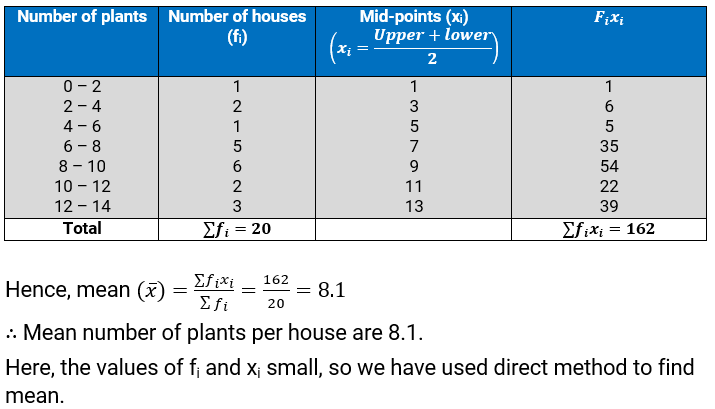
Q.2. Consider the following distribution of daily wages of 50 workers of a factory.
![]()
Find the mean daily wages of the workers of the factory by using an appropriate method.
Ans: Here, data is large. So, we can use step-deviation method to calculate the mean.
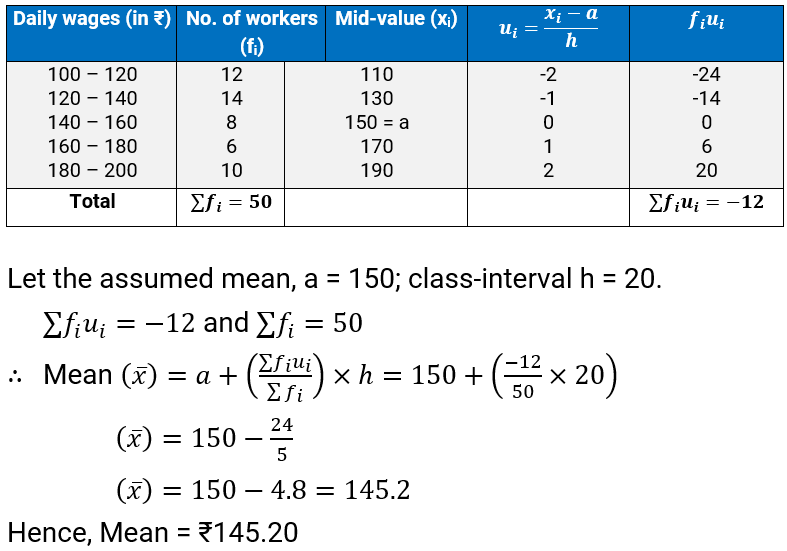
Q.3. The following distribution shows the daily pocket allowance of children of a locality. The mean pocket allowance is Rs 18. Find the missing frequency f.

Ans: Here, we can use assumed mean method. 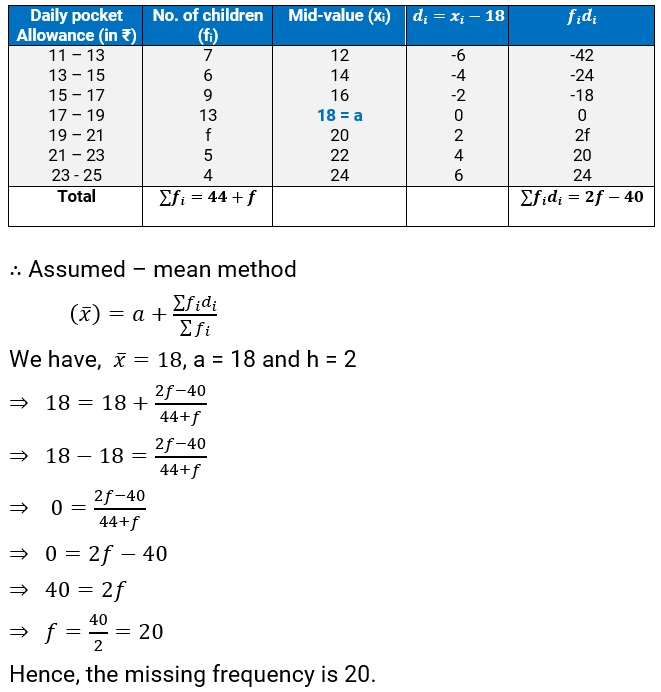
Q.4. Thirty women were examined in a hospital by a doctor and the number of heartbeats per minute were recorded and summarized as follows. Find the mean heartbeats per minute for these women, choosing a suitable method.

Ans: Here, we are using step-deviation method.
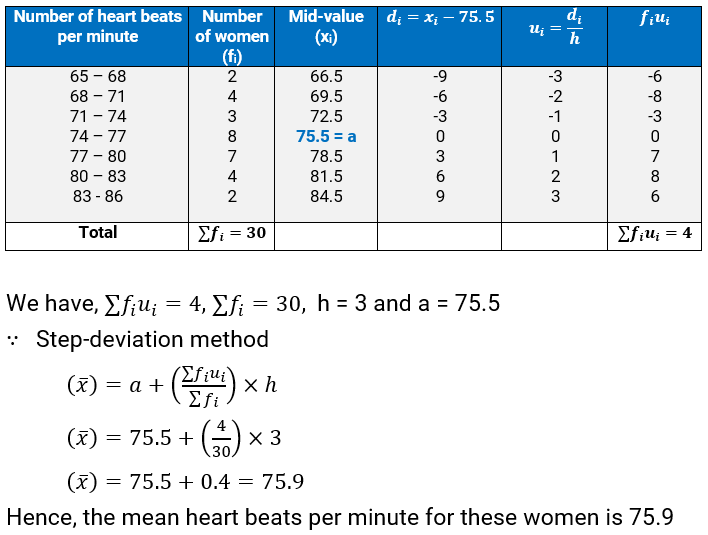
Q.5. In a retail market, fruit vendors were selling mangoes kept in packing boxes. These boxes contained varying number of mangoes. The following was the distribution of mangoes according to the number of boxes.
![]()
Find the mean number of mangoes kept in a packing box. Which method of finding the mean did you choose?
Ans:
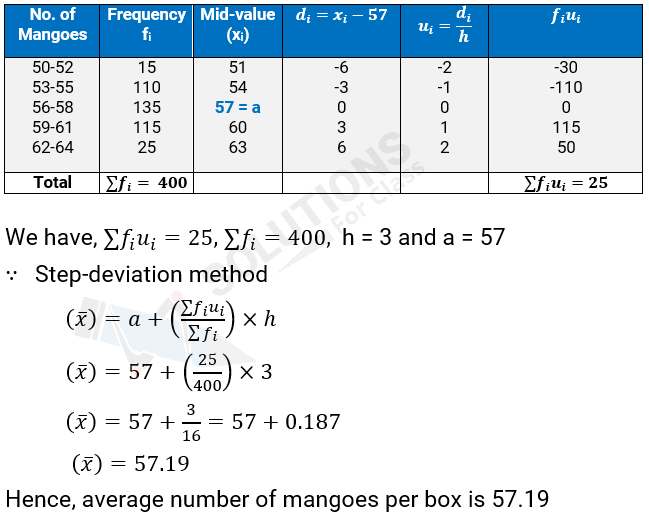
Q.6. The table below shows the daily expenditure on food of 25 households in a locality.
![]()
Find the mean daily expenditure on food by a suitable method.
Ans: We construct the following table:
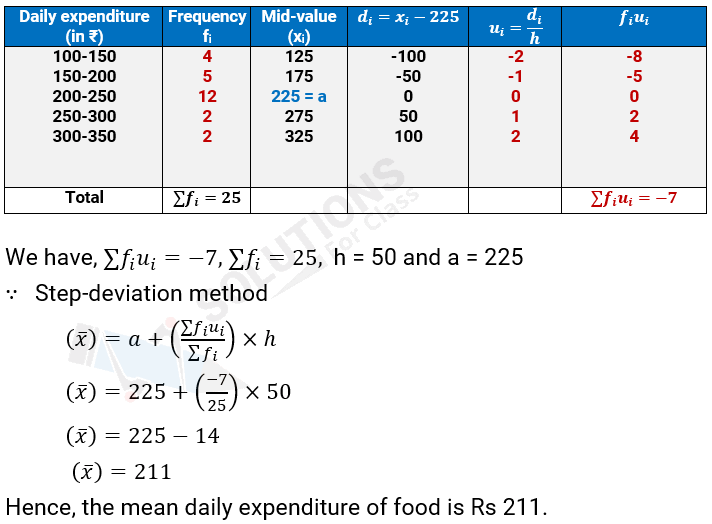
Q.7. To find out the concentration of SO2 in the air (in parts per million, i.e., ppm), the data
was collected for 30 localities in a certain city and is presented below:

Find the mean concentration of SO2 in the air.
Ans: constructing the table.
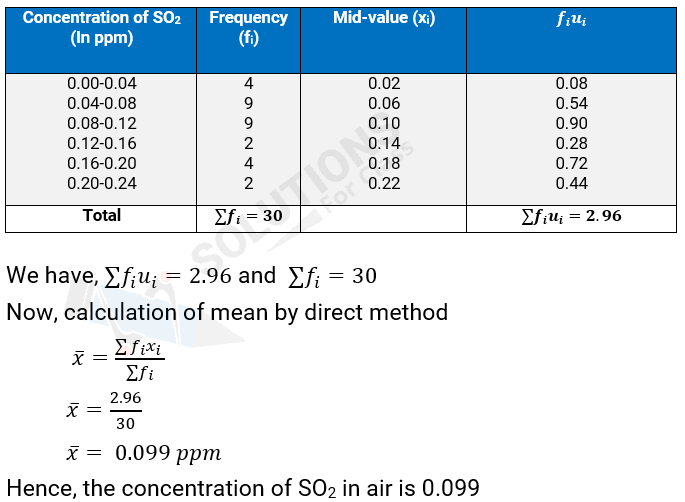
Q.8. A class teacher has the following absentee record of 40 students of a class for the whole term. Find the mean number of days a student was absent.![]()
Ans: Here, the given data are small. Let us apply the direct method.
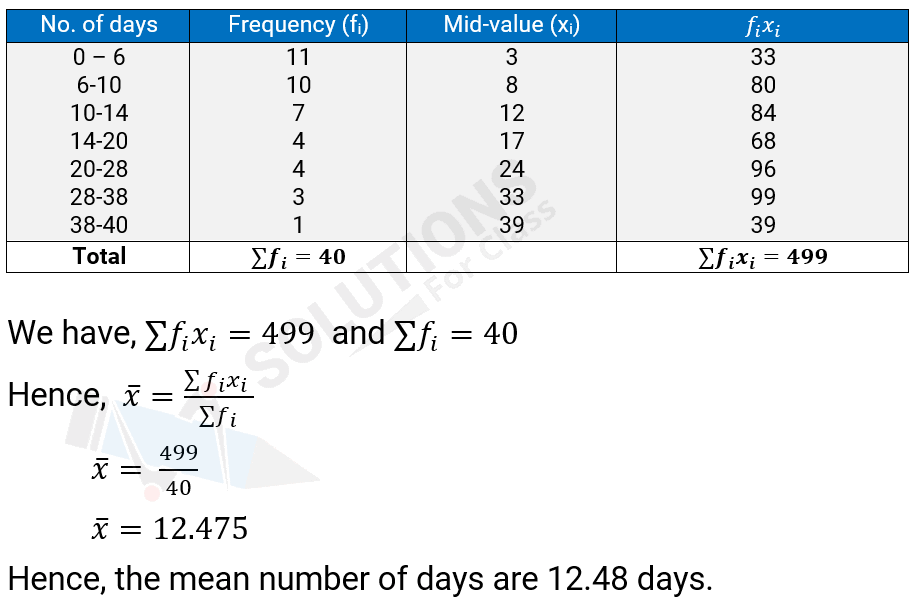
Q.9. The following table gives the literacy rate (in percentage) of 35 cities. Find the mean literacy rate.

Ans: Let the assumed mean, A = 70, class interval, h = 10
So ${{u}_{1}}=\frac{{{x}_{1}}-A}{h}=\frac{{{x}_{1}}-70}{10}$


